1.3: Lesson Legend
- Page ID
- 2317
\( \newcommand{\vecs}[1]{\overset { \scriptstyle \rightharpoonup} {\mathbf{#1}} } \)
\( \newcommand{\vecd}[1]{\overset{-\!-\!\rightharpoonup}{\vphantom{a}\smash {#1}}} \)
\( \newcommand{\id}{\mathrm{id}}\) \( \newcommand{\Span}{\mathrm{span}}\)
( \newcommand{\kernel}{\mathrm{null}\,}\) \( \newcommand{\range}{\mathrm{range}\,}\)
\( \newcommand{\RealPart}{\mathrm{Re}}\) \( \newcommand{\ImaginaryPart}{\mathrm{Im}}\)
\( \newcommand{\Argument}{\mathrm{Arg}}\) \( \newcommand{\norm}[1]{\| #1 \|}\)
\( \newcommand{\inner}[2]{\langle #1, #2 \rangle}\)
\( \newcommand{\Span}{\mathrm{span}}\)
\( \newcommand{\id}{\mathrm{id}}\)
\( \newcommand{\Span}{\mathrm{span}}\)
\( \newcommand{\kernel}{\mathrm{null}\,}\)
\( \newcommand{\range}{\mathrm{range}\,}\)
\( \newcommand{\RealPart}{\mathrm{Re}}\)
\( \newcommand{\ImaginaryPart}{\mathrm{Im}}\)
\( \newcommand{\Argument}{\mathrm{Arg}}\)
\( \newcommand{\norm}[1]{\| #1 \|}\)
\( \newcommand{\inner}[2]{\langle #1, #2 \rangle}\)
\( \newcommand{\Span}{\mathrm{span}}\) \( \newcommand{\AA}{\unicode[.8,0]{x212B}}\)
\( \newcommand{\vectorA}[1]{\vec{#1}} % arrow\)
\( \newcommand{\vectorAt}[1]{\vec{\text{#1}}} % arrow\)
\( \newcommand{\vectorB}[1]{\overset { \scriptstyle \rightharpoonup} {\mathbf{#1}} } \)
\( \newcommand{\vectorC}[1]{\textbf{#1}} \)
\( \newcommand{\vectorD}[1]{\overrightarrow{#1}} \)
\( \newcommand{\vectorDt}[1]{\overrightarrow{\text{#1}}} \)
\( \newcommand{\vectE}[1]{\overset{-\!-\!\rightharpoonup}{\vphantom{a}\smash{\mathbf {#1}}}} \)
\( \newcommand{\vecs}[1]{\overset { \scriptstyle \rightharpoonup} {\mathbf{#1}} } \)
\( \newcommand{\vecd}[1]{\overset{-\!-\!\rightharpoonup}{\vphantom{a}\smash {#1}}} \)
\(\newcommand{\avec}{\mathbf a}\) \(\newcommand{\bvec}{\mathbf b}\) \(\newcommand{\cvec}{\mathbf c}\) \(\newcommand{\dvec}{\mathbf d}\) \(\newcommand{\dtil}{\widetilde{\mathbf d}}\) \(\newcommand{\evec}{\mathbf e}\) \(\newcommand{\fvec}{\mathbf f}\) \(\newcommand{\nvec}{\mathbf n}\) \(\newcommand{\pvec}{\mathbf p}\) \(\newcommand{\qvec}{\mathbf q}\) \(\newcommand{\svec}{\mathbf s}\) \(\newcommand{\tvec}{\mathbf t}\) \(\newcommand{\uvec}{\mathbf u}\) \(\newcommand{\vvec}{\mathbf v}\) \(\newcommand{\wvec}{\mathbf w}\) \(\newcommand{\xvec}{\mathbf x}\) \(\newcommand{\yvec}{\mathbf y}\) \(\newcommand{\zvec}{\mathbf z}\) \(\newcommand{\rvec}{\mathbf r}\) \(\newcommand{\mvec}{\mathbf m}\) \(\newcommand{\zerovec}{\mathbf 0}\) \(\newcommand{\onevec}{\mathbf 1}\) \(\newcommand{\real}{\mathbb R}\) \(\newcommand{\twovec}[2]{\left[\begin{array}{r}#1 \\ #2 \end{array}\right]}\) \(\newcommand{\ctwovec}[2]{\left[\begin{array}{c}#1 \\ #2 \end{array}\right]}\) \(\newcommand{\threevec}[3]{\left[\begin{array}{r}#1 \\ #2 \\ #3 \end{array}\right]}\) \(\newcommand{\cthreevec}[3]{\left[\begin{array}{c}#1 \\ #2 \\ #3 \end{array}\right]}\) \(\newcommand{\fourvec}[4]{\left[\begin{array}{r}#1 \\ #2 \\ #3 \\ #4 \end{array}\right]}\) \(\newcommand{\cfourvec}[4]{\left[\begin{array}{c}#1 \\ #2 \\ #3 \\ #4 \end{array}\right]}\) \(\newcommand{\fivevec}[5]{\left[\begin{array}{r}#1 \\ #2 \\ #3 \\ #4 \\ #5 \\ \end{array}\right]}\) \(\newcommand{\cfivevec}[5]{\left[\begin{array}{c}#1 \\ #2 \\ #3 \\ #4 \\ #5 \\ \end{array}\right]}\) \(\newcommand{\mattwo}[4]{\left[\begin{array}{rr}#1 \amp #2 \\ #3 \amp #4 \\ \end{array}\right]}\) \(\newcommand{\laspan}[1]{\text{Span}\{#1\}}\) \(\newcommand{\bcal}{\cal B}\) \(\newcommand{\ccal}{\cal C}\) \(\newcommand{\scal}{\cal S}\) \(\newcommand{\wcal}{\cal W}\) \(\newcommand{\ecal}{\cal E}\) \(\newcommand{\coords}[2]{\left\{#1\right\}_{#2}}\) \(\newcommand{\gray}[1]{\color{gray}{#1}}\) \(\newcommand{\lgray}[1]{\color{lightgray}{#1}}\) \(\newcommand{\rank}{\operatorname{rank}}\) \(\newcommand{\row}{\text{Row}}\) \(\newcommand{\col}{\text{Col}}\) \(\renewcommand{\row}{\text{Row}}\) \(\newcommand{\nul}{\text{Nul}}\) \(\newcommand{\var}{\text{Var}}\) \(\newcommand{\corr}{\text{corr}}\) \(\newcommand{\len}[1]{\left|#1\right|}\) \(\newcommand{\bbar}{\overline{\bvec}}\) \(\newcommand{\bhat}{\widehat{\bvec}}\) \(\newcommand{\bperp}{\bvec^\perp}\) \(\newcommand{\xhat}{\widehat{\xvec}}\) \(\newcommand{\vhat}{\widehat{\vvec}}\) \(\newcommand{\uhat}{\widehat{\uvec}}\) \(\newcommand{\what}{\widehat{\wvec}}\) \(\newcommand{\Sighat}{\widehat{\Sigma}}\) \(\newcommand{\lt}{<}\) \(\newcommand{\gt}{>}\) \(\newcommand{\amp}{&}\) \(\definecolor{fillinmathshade}{gray}{0.9}\)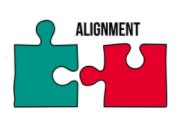
The National Health Education Standards (NHES) on which the lesson is based.
- The NHES have developed the Centers for Disease Control and Protection (CDC) to establish, promote and support health-enhancing behaviors for students in all grade levels-from pre-Kindergarten through grade 12. They provide student, families, and communities with concrete expectations for health education.
- See Lesson 14.1 for more information on NHES Standards.
The Wellness Guidelines supported by the lesson.
- The eight Wellness Guidelines are adapted from the 2015-2020 Dietary Guidelines for Americans by the U.S. Departments of Agriculture (USDA) and Health and Human Services (HHS). The Dietary Guidelines is the 8th edition released since 1980 and remains the current edition until the 2020-2025 Dietary Guidelines for Americans is released. The Dietary Guidelines is required under the 1990 National Nutrition Monitoring and Related Research Act, which states that every 5 years, the USDA and HSS must jointly publish a report containing nutritional and dietary information and guidelines for the general public. The statute (Public Law 101-445, 7 U.S.C. 5341 et seq.) requires that the Dietary Guidelines be based on the preponderance of current scientific and medical knowledge.
- Note: Students measure their successful behavior modification related to NHES and Wellness Guidelines by setting and tracking SMART Goals - an acronym for Specific, Measurable; Action-oriented, Realistic, Time-bound.
Healthy Me Journey
- The Healthy Me Journey (HMJ) is a program that encourages participants to make healthier choices in-line with the Wellness Guidelines and HealthCorps three pillars (nutrition, fitness, and mental resilience) by providing the knowledge and skills necessary to establish healthy habits. Because health is personal, participants start by taking an online health behavior questionnaire, the Healthy Me Snapshot, which produces individualized feedback reports comparing their behaviors to national recommendations. Participants then learn how to set SMART Goals, and they work towards a personal health goal for the duration of six weeks. At the end of the six weeks, participants reflect on their journey, assessing the barriers they faced and celebrating their successes. Now that participants are familiar and more comfortable with goal setting, they are encouraged to set another SMART goal so that the goal-setting skill is further developed.
- The HMJ also is a tool to influence priorities on an organizational level. All of the Healthy Me Snapshots are aggregated into a Healthy School Snapshot to display the most identified health concerns for a specific population. The aggregate report can help inform decision making with interventions, campaigns, budgeting and other activities that promote a healthy environment.
- If you are engaging students in the Healthy Me Journey (Chapter 2) and they have created SMART Goals, then you can use the next two boxes to check-in with students on progress towards their goal and reiterate what the guidelines are at the beginning of every lesson.
Smart Goals
- Instruction: In a group or think-pair-share format, have participants discuss the following questions. Acknowledge those who have progressed toward their goal(s) and encourage anyone who wants to change or modify their goal to get 1:1 support.
- Share: Let’s discuss our SMART Goals.
-
- How is it going with your current SMART goal?
- What are some ways you can improve progress towards your goal? (Grows)
- What are some ways you are doing well with progress towards your goal? (Glows)
Guideline: [Lesson-relevant guideline(s) listed]
- Share: What guideline do you think is related to today’s lesson? Who has a SMART Goal related to this guideline?
- Instruction: Select one activity.
-
- Guideline Popcorn: The group lists all 8 guidelines rapidly in popcorn format.
- Guideline Charades: Divide participants into groups and assign each a guideline. Each group has to silently act out the guideline for the rest to guess.
- Two Truths and One Lie:
- Truth 1: [guideline-specific content]
- Truth 2: [guideline-specific content]
- Lie: [guideline-specific content]
- Questions to discuss and/or journal:
- [guideline-specific content]
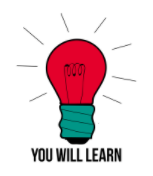
Key takeaway students should receive from the lesson.
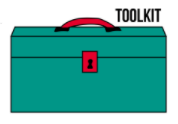
The list of everything you will need to carry out facilitating the lesson
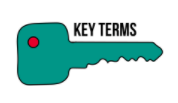
Provides the knowledge and intellectual skills that a student will learn during this less plan.
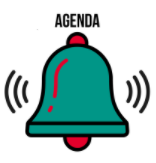
A detailed agenda of what happens from the start to the finish of the lesson; Can be posted for students as “Bell to Bell” “Today’s Agenda” and includes key terms.

Where actual lesson activities begin; Content, discussion questions and skills instruction to ensure seamless delivery for the facilitator. Types of activities include:
- Good to Know: [Title] – lecture
- Real World Relevance: [Title] – real-life application
- Hands-On: [Title] – skills-based, interactive activity
Facilitator Notes
- Set Up: what preparation is needed prior to activity
- Instruction: how students do or participate in the activity
- Share: what to say about the activity whether to introduce or debrief.
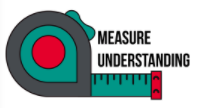
Where students need to STOP and reflect on what they have just learned and reviewed the key concepts and skill taught. Consider throughout the lesson to stop and ask students for feedback or have them complete an exit ticket. Exit Tickets can drive office hours and mentoring.
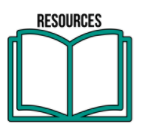
Any supplementary information for the facilitator including additional articles, videos, and activities that provides helpful knowledge and insight for the lesson.

